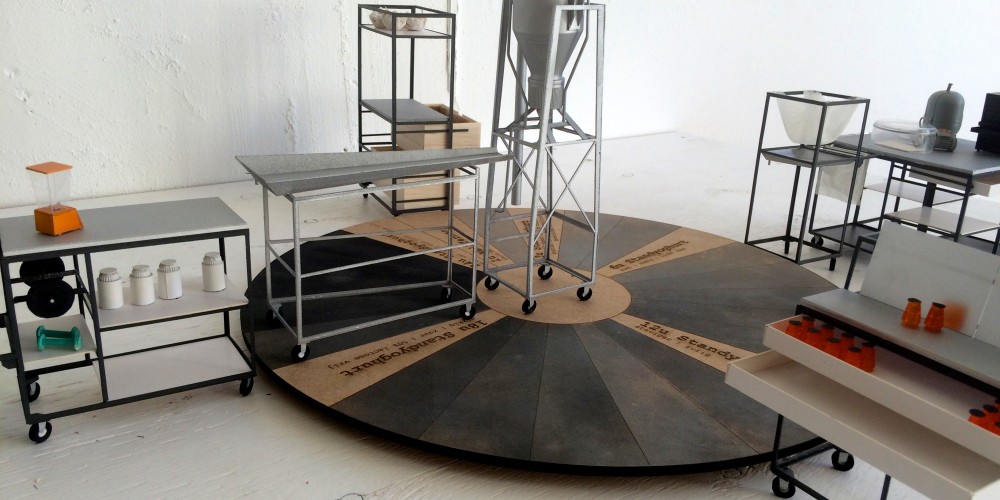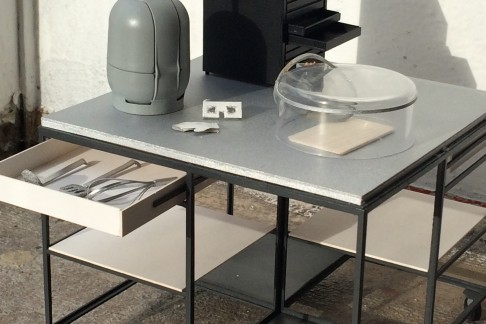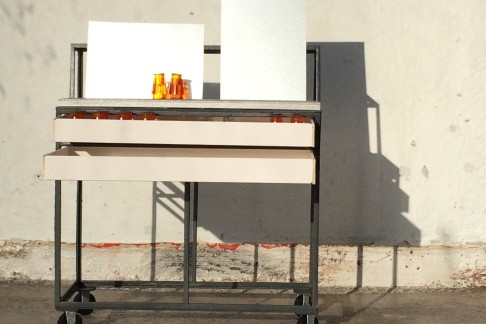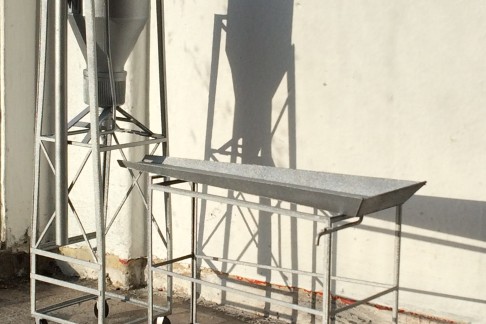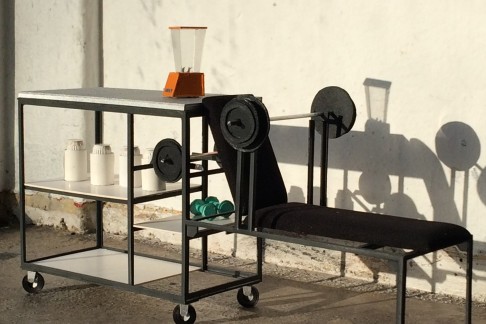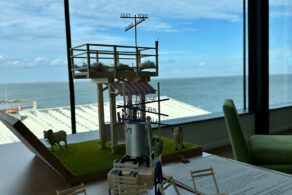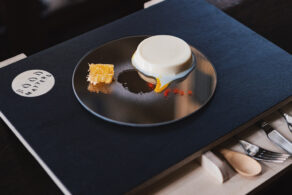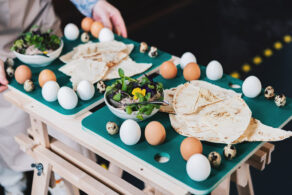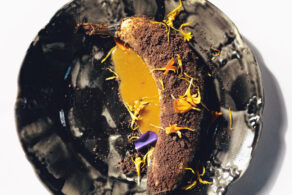Gepubliceerd op 22-09-2016
The Yoghurt Clock is an autonomic research project, which resulted in a scaled model. This so-called paradigm shows us what a process can look like, from an alternate viewpoint.
Yoghurt is made by adding bacteria to milk. The bacteria degrade the lactose (milk sugar), convert it into lactic acid, and after 24 hours it results in yoghurt. The process of making yoghurt is very clear. We dissected this process, and discovered that there are different ‘turns’ that can be taken. One does not have to wait for 24 hours before achieving the desired product, as the lactic acid process can be stopped at any given time. As such, other fully- and semi-manifactured products are formed. By looking at this straightforward process from a distinct perspective, one can discover a richness of uses.
Between ‘turns’ of the yoghurt-making process, are possibilities to make whey shakes (for athletes) or skin care and cosmetics. In this process, one can alsoopt for yoghurt flakes, yoghurt ferment (ferment at home to develop your own flavours), or lactose free yoghurt. These products all occur from the same, straightforward process.
The yoghurt-making process takes one full day, so we decided to make the scaled model in the shape of a clock. There you have it, a Yoghurt clock!
The Yoghurt clock as a school lunch
Making School is an exhibition and research about the future of professional education. By invitation we gave meaning to the element School Lunch. During this special lunch designers and educational professionals discussed the role of creativity in food innovation. The Yoghurt clock was not only one of the discussed subjects, but also served as lunch.
The Yoghurt Clock at KitchenLab
KitchenLab researches the production, the processing and the consumption of food. Fourteen Dutch designers were asked to share and show their innovative ideas for ‘DIY cooking’.
In January 2017, by invitation of FRAME Magazine, the curator of KitchenLab, we gave a live demonstration of the Yoghurt clock. Read more about KitchenLab on the website of FRAME Magazine.
Thanks to: Eva Flantua

